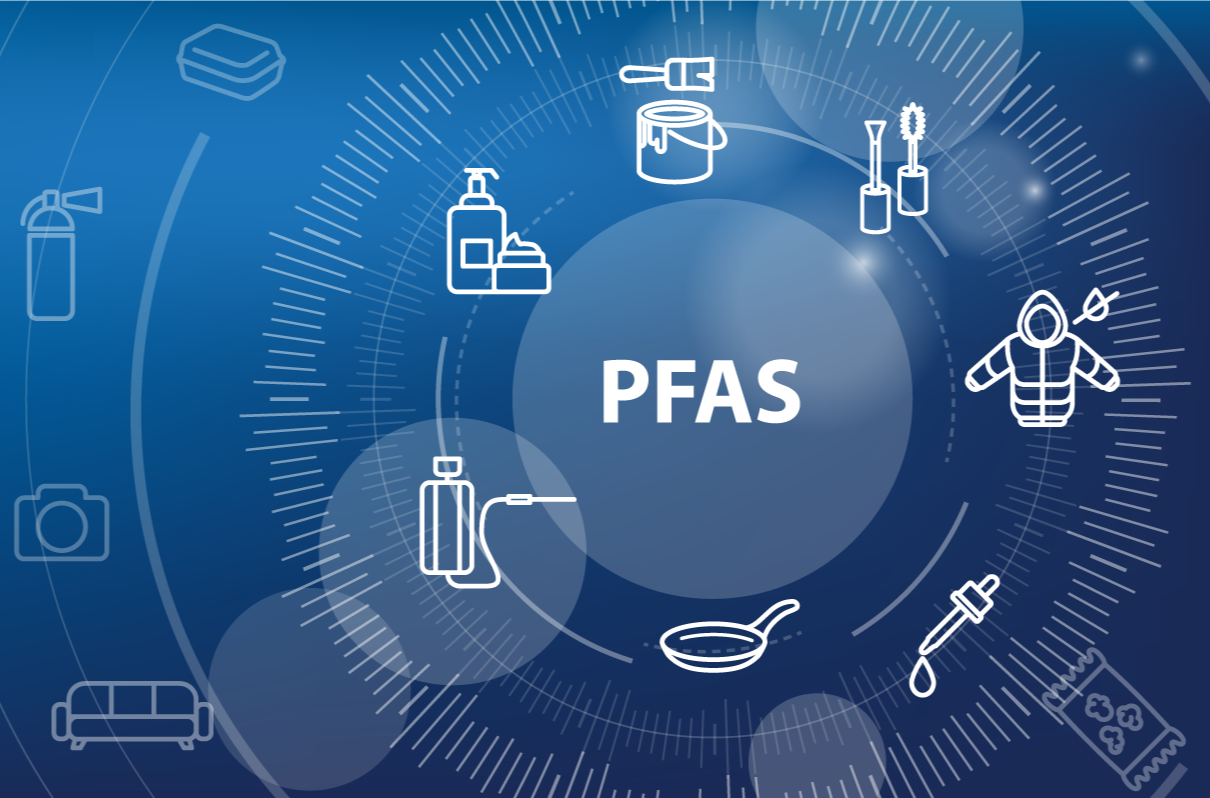Regulatory and market-based programs are steadily increasing opportunities for entities to contract with projects that reduce emissions of carbon dioxide and other greenhouse gases (GHGs), and to claim credit for those “carbon offsets.” Some such claims are used to satisfy formal air quality and GHG reduction requirements, while others are touted to enhance entities’ “green” credentials. Programs around the globe compile such claims, and some provide third party validations – but possible “greenwashing” of unjustified claims remains a significant concern. To address these concerns, California has just enacted legislation to regulate Voluntary Cabon Market Disclosures and penalize noncompliance (Assembly Bill (AB) 1305, Gabriel). These requirements synthesize the most thorough voluntary disclosure programs, and are intended not only to protect California consumers but to codify disclosure standards. The rest of this note summarizes carbon offsets, and AB 1305 requirements.
Read MoreAudit, Compliance and Risk Blog
Tags: Environmental, Greenhouse Gas, greenhouse, California, Environment, Environmental Policy, environmental protection
EPA tightens Toxics Release Inventory reporting requirements for PFAS “Forever chemicals”
Posted by Jon Elliott on Mon, Nov 20, 2023
On October 31, 2023 the US Environmental Protection Agency (EPA) tightened its reporting requirements for per- and polyfluoroalkyl substances (PFAS) – frequently called ‘forever chemicals” because they biodegrade very slowly – under its Toxic Release Inventory (TRI) program. These changes finalize a proposal issued in (which I wrote about HERE), and reflect EPA’s agency-wide efforts to tighten controls on PFASs proposed in December 2022 (I wrote about these efforts HERE). The new TRI revisions apply to reports beginning in calendar year 2024. The remainder of this note summarizes these changes.
Tags: Environmental, EPA, Environment, Environmental Policy, TRI, PFAS
EPA proposes management requirements for equipment containing HFCs
Posted by Jon Elliott on Mon, Nov 06, 2023
On October 19, 2023, the US Environmental Protection Agency (EPA) proposed to establish requirements for the management of hydrofluorocarbons (HFCs) potentially released from equipment during maintenance or other services, and manage spent HFCs.. These rules support US efforts to implement the 2016 Kigali Amendment to the United Nations-sponsored Montreal Protocol on Substances that Deplete the Ozone Layer (which I wrote about HERE), and codified in the December 2020 coronavirus relief bill (American Innovation and Manufacturing Act of 2020 (AIM Act; which included dozens of unrelated provisions within its 5,593 pages). EPA adopted its over-arching HFC phase-down rules in September 2021 (I wrote about them HERE), and continues to adjust and refine their requirements. The remainder of this note summarizes EPA’s new proposal, which would impose requirements using authority under the Clean Air Act (CAA) and the Resource Conservation and Recovery Act (RCRA).
Read MoreTags: EPA, RCRA, Environment, HFCs, Environmental Policy, CCA, environmental protection, CFC
Pollution Prevention Plan requirements under Canadian Environmental Protection Act
Posted by Jon Elliott on Wed, Sep 27, 2023
The Canadian Environmental Protection Act of 1999 (CEPA) provides a variety of federal environmental protection provisions throughout Canada. The Minister of the Environment and Climate Change (the Minister; who oversees Environment and Climate Change Canada (ECCC), and to which I attribute CEPA authorizations in this note) prepares regulations (including lists of chemicals regulated in different circumstances), and conducts additional planning, regulatory and enforcement activities. In particular, CEPA authorizes the Minister to issue Pollution Prevention Notices (P2 Notices) directing targeted entities to prepare P2 Plans to improve management of any listed “Toxic Substance” in order to reduce environmental impacts. The rest of this note summarizes P2 requirements, which will be revised to conform with CEPA amendments adopted this summer by Bill S-5, the “Strengthening Environmental Protection for a Healthier Canada Act” (S-5), which received Royal Assent on June 13, 2023.
Read More
Tags: Environmental, Environment, Environmental Policy, Pollution, CEPA, environmental protection
Several national laws empower the US Environmental Protection Agency (EPA) to set standards for the cleanup of contamination that resulted from accidental or deliberate releases of chemicals and other materials onto land or into water. EPA’s actions include direct requirements for cleanup by responsible parties, and also inform other parties’ evaluations of if and how to prepare contaminated areas for reuse – often referred to as “brownfields” since they’re assumed to be dirtier than never-used “greenfields.” The remainder of this note discusses EPA’s 73 page “Climate Smart Brownfields Manual,” issued by the agency in 2021
Read MoreTags: Health & Safety, EPA, chemical safety, Hazardous Waste, Environment
Canada identifies possible provisions for a Federal Plastics Registry
Posted by Jon Elliott on Thu, Jul 20, 2023
Environment and Climate Change Canada (ECCC) is developing a Federal Plastics Registry, in support of the government’s goal of zero plastic waste by 2030. The proposed Registry will create a consistent national framework of reporting requirements. On April 23, 2023, ECCC published a Technical Paper with “technical details and reporting requirements” for the Registry, reflecting several years of development –a discussion paper published in October 2020, a “What We Heard” summary of comments received on that paper, a Consultation Paper published in July 2022, and comments received on that document. ECCC intends to formally propose requirements for the Registry by the end of 2023, and to require reporting beginning in 2025.
Read MoreTags: Environmental, Environment, pollutants, plastics, ECCC
EPA proposes to update and expand mandatory greenhouse gas emission reporting requirements
Posted by Jon Elliott on Fri, Jul 14, 2023
For over a decade, the US Environmental Protection Agency (EPA) has required thousands of facilities and organizations to report annual emissions of greenhouse gases (GHGs), in what it refers to as its Greenhouse Gas Reporting Program (GHGRP) (40 CFR part 98). On May 22, 2023, EPA published an extensive set of proposals to update and expand existing requirements. These proposals supplement and supersede proposals published in June 2022 but not acted on by the agency. The remainder of this note summarizes these proposals, focusing not on the many technical revisions to existing requirements but on proposals to target additional activities with reporting requirements. (I’ve written about EPA’s mandatory GHG reporting program several times, including HERE).
Read MoreTags: Environmental, EPA, Greenhouse Gas, Environment
EPA and Corps of Engineers finalize re-definition of “Waters of the United States"
Posted by Jon Elliott on Tue, Feb 21, 2023
On January 18, 2023, the US Environmental Protection Agency (EPA) and US Army Corps of Engineers (Corps) adopted revised definitions of “waters of the United States.” The Clean Water Act (CWA) empowers federal agencies to regulate activities that may affect “waters of the United States”—sometimes called “navigable waters.” These activities include water quality planning and discharge regulation by EPA and delegated states, and regulation of projects that may lead to “dredge and fill” of waters, requiring permits from the Corps. The remainder of this note offers a brief summary of the last 20 years of judicial reinterpretations and regulatory responses, and discusses the latest revisions.
Read More
Tags: EPA, Clear water, Environment, water
Proposal to Require Climate Risks and Resilience Plans from Significant Federal Suppliers
Posted by Jon Elliott on Mon, Nov 28, 2022
On November 10, the Biden Administration announced a proposal to amend the Federal Acquisition Regulation (FAR) to require “major federal suppliers” and “significant federal suppliers” to disclose their greenhouse gas (GHG) emissions and assessments of climate-related risks, and to set targets for GHG emission reductions. The rest of this note summarizes this proposal.
Read MoreTags: Environmental, Greenhouse Gas, ghg, CO2 Emissions, Environment, Environmental Policy, Climate, FAR, NASA, DOD
The US had been a major player in the drafting and enactment of the Kigali Amendment (during President Obama’s administration), but then withdrew its support (during President Trump’s administration). However, the US enacted Kigali-like requirements in the December 2020 coronavirus relief bill (American Innovation and Manufacturing Act of 2020 (AIM Act)), among the many provisions buried within its 5,593 pages; EPA finalized its rules in September 2021 (I wrote about these rules here).
The remainder of this note summarizes the situation.
Why are HFCs being phased down, and how?
HFCs were developed primarily as substitutes for chlorofluorocarbons (CFCs), which are the principal ozone depleting substances (ODSs) targeted by the Montreal Protocol. HFCs have lower but non-zero ozone depleting potential, and are greenhouse gases that contribute to climate change. Accordingly, nearly 30 years after the initial 1987 approval of the Montreal Protocol roughly 200 national and international parties negotiated HFC phase-downs. As adopted in Kigali, Rwanda these amendments divide countries into three groups with different schedules and targets:- developed nations including the United States – cut consumption to 90% of 2011-2013 baseline of most HFCs (plus 15% of those already covered by the Protocol) by 2019, declining to 15% by 2036
- most developing nations, including China and over 100 others - consumption to peak in 2024 at 100% of 2011-2013 baseline of most HFCs (plus 25% of those already covered by the Protocol), declining to 20% by 2045
- 10 hot-climate developing countries (where air conditioning is particularly important), including India, Pakistan and some Gulf states - consumption to peak in 2028 at 100% of 2011-2013 baseline of most HFCs (plus 25% of those already covered by the Protocol), declining to 15% by 2047
After the Trump administration replaced the Obama administration, the US took no action on this agreement. During this period, however, other countries have moved forward to ratify and work to meet their commitments.
What HFC-related provisions did the AIM Act enact?
The massive coronavirus relief bill includes Division S (“Innovation for the Environment”), with section 103 (“American Innovation and Manufacturing Act of 2020”). Without mentioning the Kigali Amendment, section 103 incorporates its requirements into US law:- the legislation lists 18 specific HFCs, and authorizes EPA to designate additional formulations
- EPA was to calculate 2011-2013 production and consumption baselines for each, and to use these to calculate future phase-down levels ranging from 90% in 2020 to 15% in 2036 and thereafter
- EPA was to issue regulations with 270 days (by 9/23/21) to set phase-down requirements, with associated procedural requirements including allowances associated with each baseline amount, and reclamation and destruction methods
EPA’s rules are designed to meet these requirements. In addition, EPA has initiated or re-invigorated other programs to support the phase-down of HFCs and their replacement by refrigerants that are less harmful to global climate and the stratospheric ozone layer.
What now?
Ratification will become official once the US submits formal notification to the United Nations. The new rules took effect on November 4, 2021 and are progressing; EPA proposed 2024-reduction formulas on October 20, 2022.. While domestic requirements will not change from those enacted through the AIM Act, ratification returns the US to the center of international HFC-reduction efforts, and reinforces national commitments to the environment.IImplementation Checklist
- Does the organization manufacture, import or use any ozone depleting substance (ODS) subject to the Montreal Protocol and/or CAA Title VI?
- If the phase-out date for any ODS has passed, do any of the organization’s activities qualify with applicable exceptions or essential uses?
- Does the organization manufacture, import or use any HFCs?
- Has the organization reviewed any such activity to identify alternatives for any HFC that is or may become subject to phase-down under US and international law?
Where do I go for more information?
Information available via the Internet includes:
● US legislation
Tags: Environmental risks, Greenhouse Gas, climate change, Environment, HFCs, Ozone Layer, Environmental Policy, Climate










